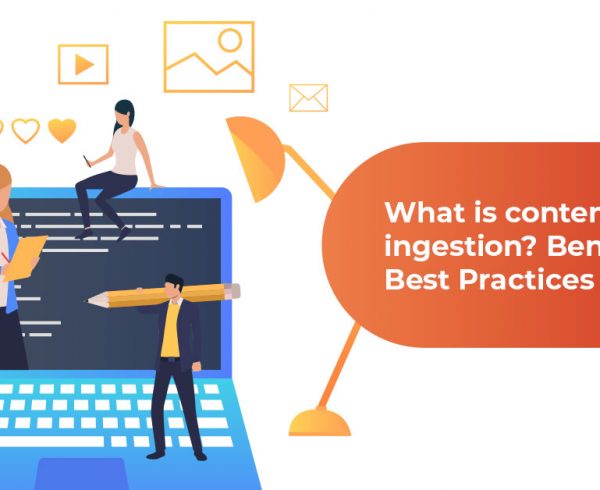In a highly complex and evolving business environment, businesses can retain a competitive edge by making data-driven decisions. Content ingestion is a means to collect customer data and use it to meet demand and secure a loyal and dependable customer base. By providing the customers the exact products or services they are looking for, organizations can achieve higher sales.
What is Content Ingestion
Content ingestion refers to the process of scanning, importing and processing data and information from all your documents. Once all data is collated in a specific database, it can be more efficiently and accurately correlated, analyzed and reported for data-driven actionable insights.
Content ingestion can take place in two phases, real-time and batch time.
Batch Content Ingestion
In this process, data and information is collected and grouped periodically and then transferred to a destination system.
Real-time Content Ingestion
As the name suggests, real-time content ingestion is a process in which data is continuously processed and the output is instantly generated.
Content Ingestion for Publishers
As a publisher, with content ingestion, you can collect, correlate and analyze data on your reader preferences, for instance, which article they like to read, what books they browse on the listings pages of your website.
Audience targeting is the ability to show ads to a specific audience, based on their history of browsing, rather than to all your website visitors. Content ingestion, therefore, provides for very targeted marketing. Carrying out content ingestion with 100% accuracy becomes important for the success of any project.
Best Practices in Content Ingestion for Publishers
Profile Your Readers
Leverage content ingestion to collect and analyze the profiles of readers at both an aggregate and the micro-level. You can use these insights to identify the common traits your readers exhibit while browsing from one article to another.
As a case point, the commonalities may be content that generates the maximum eye-balls or social media buzz, or articles the readers share and comment upon.
As a publisher, you can use these content ingestion insights to understand key interest areas, demographics and motivation of users to engage with your content. You can understand like never before what works and what doesn’t with your audience and user experience.
Personalize Readers’ Experience
In today’s digital era, the customer is the king. The way to your readers’ heart and consequently to the wallet is to provide them a personalized experience. Your content may be similar to that of your competitors, but how you ensure a deep personal connect can set you apart from competition.
Use a content ingestion platform that allows you to personalize user experience through tailored content recommendation, depending on your customers’ demographics, historical use and preferences.
Grow Your Readership
Content ingestion allows publishers to market and promote their content, drive social engagement and increase the overall readership. Leverage smart, data-driven promotion strategy to amplify content on social media, search, display, video and mobile.
You can improve your user base, enjoy increased traffic levels, improve campaign scalability, prospect for a more like-minded audience, and support higher levels of demand.
Address Tactical Campaign Opportunities
Apart from leveraging first party data to personalize end-user experience, you can also use insights around your current data assets to identify new data to feed into your data strategy.
Use a content ingestion platform that allows you to use even second-party data, for instance, data of your advertisers to fill gaps and address tactical campaign opportunities.
As a best practice in content ingestion, your content ingestion platform should be able to integrate first, second and third party data for more targeted actionable insights.
In conclusion
Content ingestion service providers allow publishers to import, collect, correlate, analyze and report data from various sources, including second and third-party content. You can use these insights for impactful decision-making and personalizing end-user experience and engagement with the content.
One of the crucial aspects of any data ingestion software is the ability to extract data. The other is that it should allow for dataflow visualization. A simple and intuitive drag and drop interface will allow you to simplify and visualize complex data. Next, the content ingestion tool should be scalable to meet your data processing requirements in sync with business expansion.








